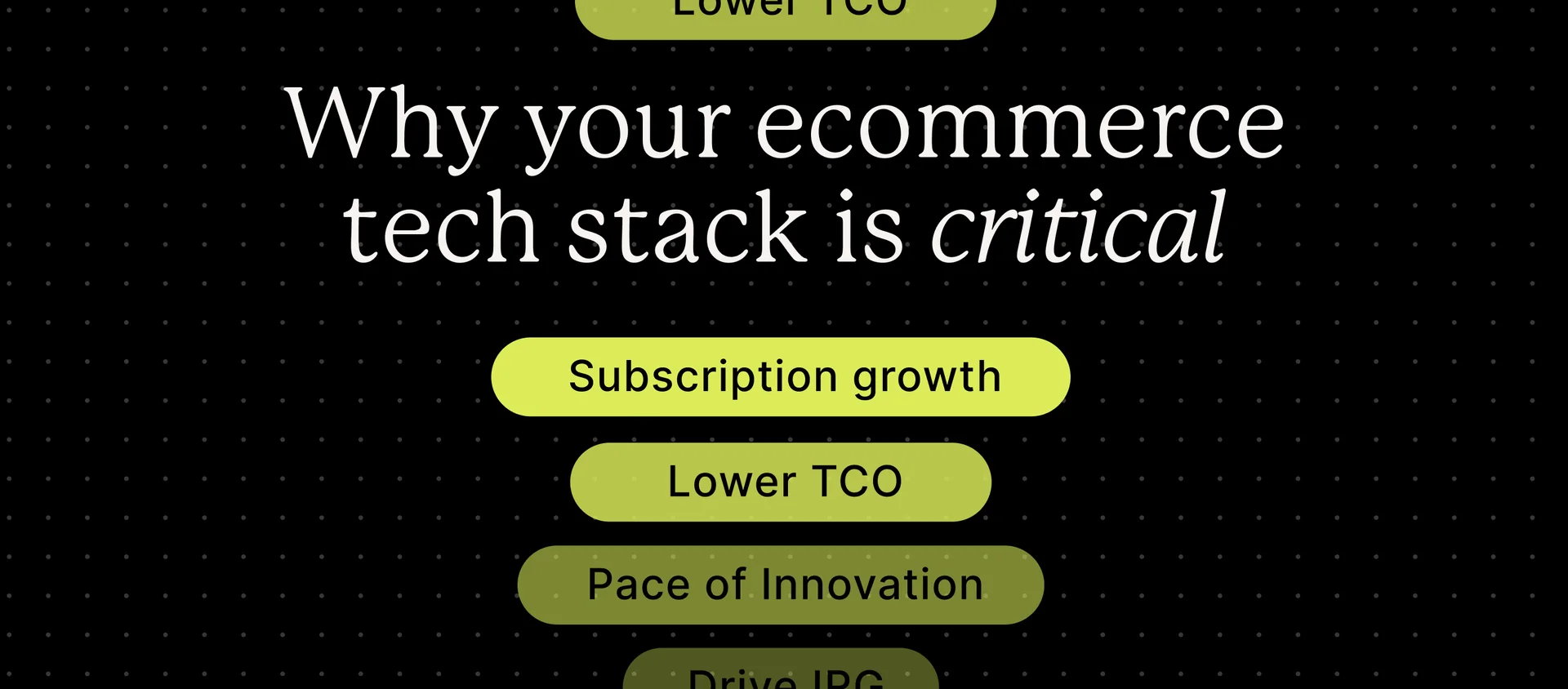Ecommerce personalization
Get started with RechargeWhat is ecommerce personalization and why is it important?
Ecommerce personalization is the practice of delivering shopping experiences that cater to individual customers’ needs, preferences, and statuses throughout the user journey. It bridges the physical gap between online retailers and individual customers through features like targeted discounts and personalized recommendations.
This creates a seamless shopping experience, akin to asking the floor sales associate for help finding what you’re looking for. This can improve both your conversion rates and customer satisfaction, and is useful for engaging customers and building trust in your brand.
What are the benefits of ecommerce personalization for brands?
The benefits of ecommerce personalization span many key business metrics, and can improve overall sentiment toward your brand. Many businesses who implement a strong ecommerce personalization strategy will see a direct impact on their KPIs.
Increased conversion: tailored online shopping experiences can generate higher conversion by putting the most desirable products directly in front of customers.
Increased average order value (AOV): related to increasing conversion, personalization can also increase AOV with tactics like strategically-placed upsells and cross-sells that customers are likely to add on to orders.
Increased retention & customer lifetime value (CLTV): by listening to customer preferences you build and deepen the relationship between the brand and the consumer, making personalization an excellent strategy to build customer loyalty and retain customers.
Increased customer satisfaction: a personalized experience provides a better experience for customers, encouraging them to increase their engagement with and loyalty to your brand.
The advantage of customer loyalty
Loyal customers are more likely to make repeat purchases, resulting in higher lifetime value. They’re also more likely to act as advocates for your brand to others, helping offset customer acquisition costs through word of mouth, affiliate marketing, and social proof like customer testimonials for your website.
Within a saturated market, your personalization efforts can also improve the overall share of voice (SOV) of your brand and provide a competitive advantage.
How do I implement commerce personalization on my website?
You can implement commerce personalization on your website through a variety of features like quizzes and promotions. Below are some ecommerce personalization examples:
- Targeted discounts
- Personalized product recommendations
- Flexible order options, such as dynamic pricing
- Targeted promotional campaigns through marketing automation
- User-generated content
- Personalized customer service
- Targeted email campaigns
Verve Coffee Roasters is an example of a business offering personalized product recommendations. They use a quiz format to guide a customer through questions that inform which specific products might suit their taste, engaging the customer before they even encounter your products.
Tip: have multiple touchpoints for personalized content throughout the customer journey
The best way to optimize personalization is to curate a personalized shopping experience at every step of the customer journey:
- Before the customer gets to your online store, through personalized marketing like targeted ad campaigns
- The first interaction with your ecommerce website
- The pathway to the products through site navigation experience and page flow
- The product description page
- Adding the product to the cart, through upsell and cross-sell recommendations
- Within the cart
- At checkout
- Post-purchase, via the customer portal
- Post-purchase, via email marketing & retargeting
How to leverage the data to deliver personalized experiences
To improve online shopping experiences, businesses can use customer data in two key ways:
- Segmentation
- Predictive forecasting
Customer segments
First, they can group customers based on factors like age, buying history, and browsing behavior. This helps tailor marketing messages and product suggestions, such as analyzing a customer’s past purchases and offering an upsell opportunity to add products that similar customers have purchased before. For example, considering a customer’s location can inform promotions for seasonal products—such as suggesting products for warmer weather during the summer of that particular geographic region.
Predictive forecasting
Second, businesses can use data on customer behavior to predict what customers might buy next. This helps suggest products that match their interests, making the shopping process smoother and boosting sales. For example, brands offering prenatal vitamins might then offer multivitamins specifically formulated for pregnancy.
Relevant articles

Why your ecommerce tech stack is critical for subscription growth and lower TCO
Sydney Weinryb December 18, 2025 Dec 18, 2025

You’ve outgrown your subscription app: The definitive guide to migrating to a platform built for scale and retention
Sydney Weinryb December 16, 2025 Dec 16, 2025

